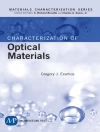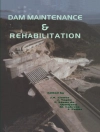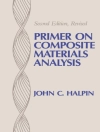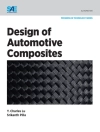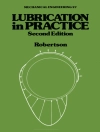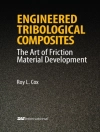Heat is a branch of thermodynamics that occupies a unique position due
to its involvement in the field of practice. Being linked to the
management, transport and exchange of energy in thermal form, it
impacts all aspects of human life and activity.
Heat transfers are, by nature, classified as conduction, convection (which
inserts conduction into fluid mechanics) and radiation. The importance
of these three transfer methods has resulted justifiably in a separate
volume being afforded to each of them. This first volume is dedicated to
thermal conduction, and, importantly, assumes an analytical approach to
the problems presented, and recalls the fundamentals.
Heat Transfer 1 combines a basic approach with a deeper understanding
of the discipline and will therefore appeal to a wide audience, from
technician to engineer, from doctoral student to teacher-researcher.
表中的内容
Preface ix
Introduction xiii
Chapter 1. The Problem of Thermal Conduction: General Comments 1
1.1. The fundamental problem of thermal conduction 1
1.2. Definitions 2
1.2.1. Temperature, isothermal surface and gradient 2
1.2.2. Flow and density of flow 4
1.3. Relation to thermodynamics 5
1.3.1. Calorimetry 5
1.3.2. The first principle 6
1.3.3. The second principle 6
Chapter 2. The Physics of Conduction 9
2.1. Introduction 9
2.2. Fourier’s law 9
2.2.1. Experiment 9
2.2.2. Temperature profile 12
2.2.3. General expression of the Fourier law 14
2.3. Heat equation 16
2.3.1. General problem 16
2.3.2. Mono-dimensional plane problem 18
2.3.3. Case of the axisymmetric system 24
2.3.4. Case of the spherical system 25
2.4. Resolution of a problem 26
2.5. Examples of application 29
2.5.1. Problems involving spherical symmetry 40
Chapter 3. Conduction in a Stationary Regime 53
3.1. Thermal resistance 53
3.1.1. Thermal resistance: plane geometry 53
3.1.2. Thermal resistance: axisymmetric geometry. The case of a cylindrical wall 62
3.1.3. Thermal resistance to convection 65
3.1.4. Critical radius 67
3.2. Examples of the application of thermal resistance in plane geometry 69
3.3. Examples of the application of the thermal resistance in cylindrical geometry 85
3.4. Problem of the critical diameter 92
3.5. Problem with the heat balance 99
Chapter 4. Quasi-stationary Model 103
4.1. We can perform a simplified calculation, adopting the following hypotheses 103
4.2. Method: instantaneous thermal balance 104
4.3. Resolution 106
4.4. Applications for plane systems 107
4.5. Applications for axisymmetric systems 152
Chapter 5. Non-stationary Conduction 183
5.1. Single-dimensional problem 183
5.1.1. Temperature imposed at the interface at instant t = 0 184
5.2. Non-stationary conduction with constant flow density 190
5.3. Temperature imposed on the wall: sinusoidal variation 193
5.4. Problem with two walls stuck together 200
5.5. Application examples 204
5.5.1. Simple applications 204
5.5.2. Some scenes from daily life 213
Chapter 6. Fin Theory: Notions and Examples 237
6.1. Notions regarding the theory of fins 237
6.1.1. Principle of fins 237
6.1.2. Elementary fin theory 238
6.1.3. Parallelepiped fin 242
6.2. Examples of application 249
Appendices 263
Appendix 1. Heat Equation of a Three-dimensional System 265
Appendix 2. Heat Equation: Writing in the Main Coordinate Systems 273
Appendix 3. One-dimensional Heat Equation 283
Appendix 4. Conduction of the Heat in a Non-stationary Regime: Solutions to Classic Problems 291
Appendix 5. Table of erf (x), erfc (x) and ierfc (x) Functions 295
Appendix 6. Complementary Information Regarding Fins 297
Appendix 7. The Laplace Transform 301
Appendix 8. Reminders Regarding Hyperbolic Functions 309
References 313
Index 315
关于作者
Michel Ledoux was Professor and Vice-President at the University of
Rouen, France. He was also Director of the UMR CNRS CORIA, then
Regional Delegate for Research and Technology in Upper Normandy,
France. Specializing in fluid mechanics and transfers, he has worked in
the fields of reactive boundary layers and spraying. Currently retired, he
is an adviser to the Conservatoire National des Arts et Metiers in
Normandy, collaborating with the Institute of Industrial Engineering
Techniques (ITII) in Vernon, France.
Abdelkhalak El Hami is Full Professor of Universities at INSA-Rouen Normandie, France. He is the author/co-author of several books and is
responsible for the Chair of mechanics at the Conservatoire National des
Arts et Metiers in Normandy, as well as for several European pedagogical
projects. He is a specialist in problems of optimization and reliability in
multi-physical systems.


